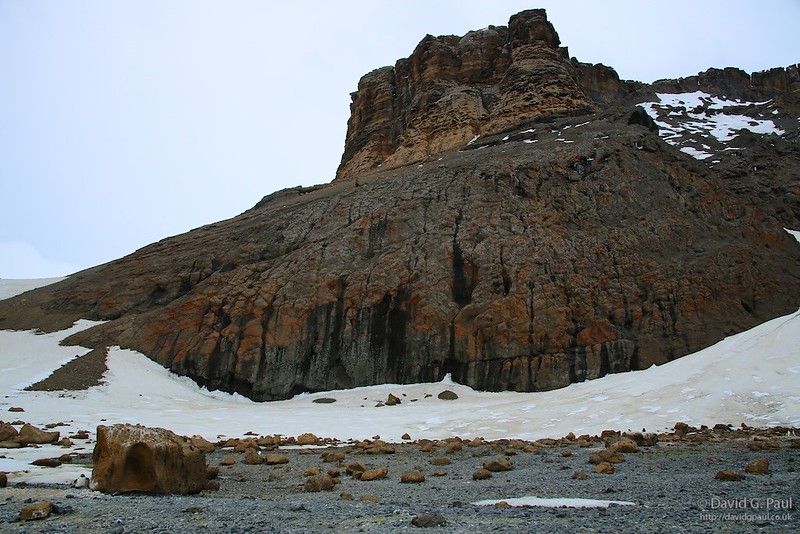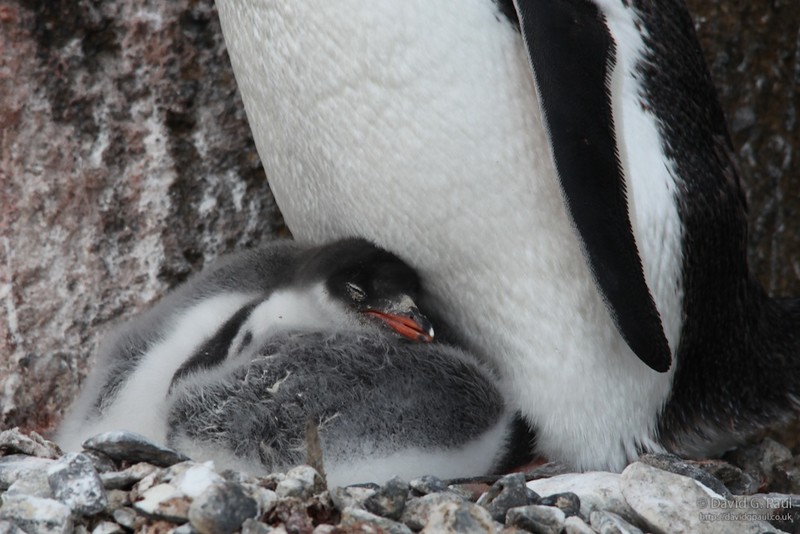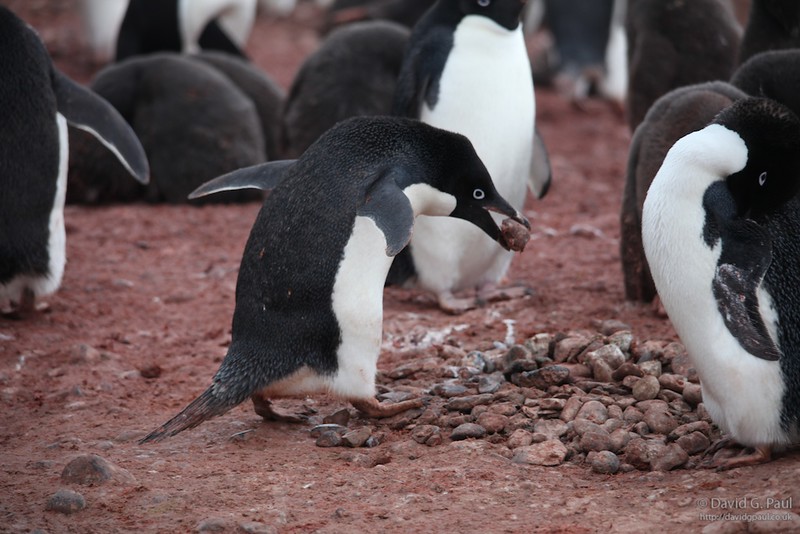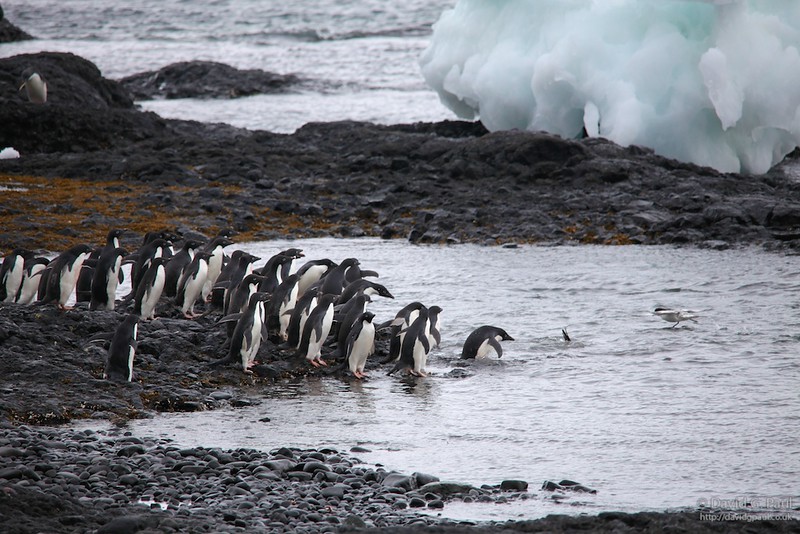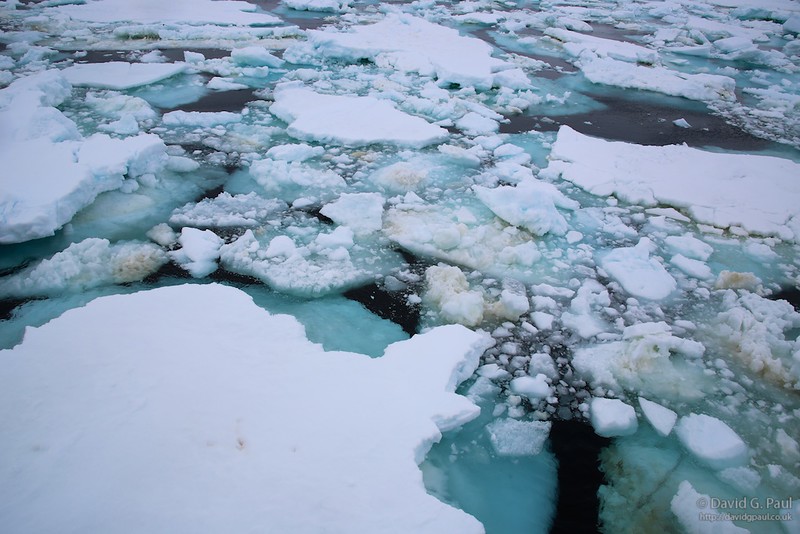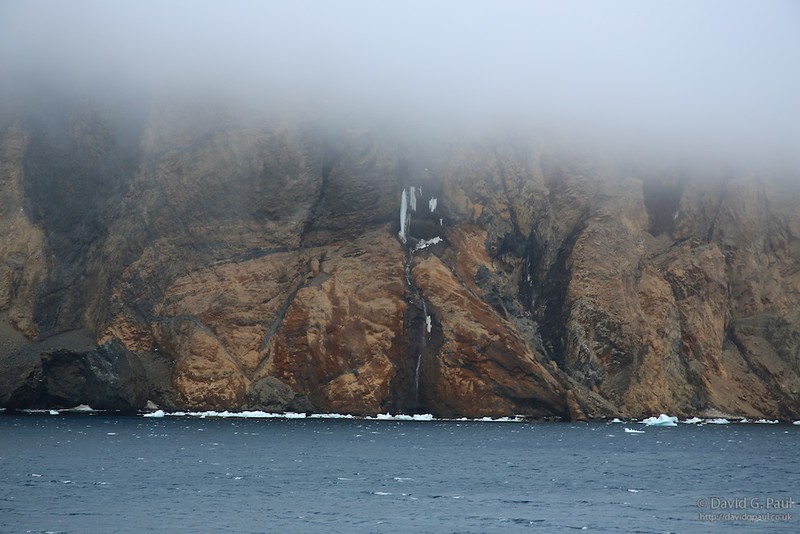The morning started with us finally arriving at the Antarctic peninsula, having navigated around the ice shelf over night. Our starting point for the morning was a place called Antarctic Sound – an area between the mainland and some islands, and named after Otto Nordenskjöld’s ship which sank near Paulet Island in 1903.
Before breakfast there was a pair of humpback whales going around the ship as we crossed the Sound, and shortly after breakfast we dropped the anchor ready to go ashore on to what for most people would be their seventh continent.
As we took the zodiac to the shore we had to weave around icebergs in the water, some of which had Adélie penguins on them. It was a great ride and in some places we got so close to smaller icebergs we could have reached out and touched them (though some of the group on the other side of the boat would only have had to have leaned back to touch them).
We went ashore at Brown Bluff, the remains of an extinct volcano with a height of 745 metres, and finally stepping foot onto the last continent. It was unbelievably great to do so – there were Adélie and Gentoo penguins all around, icebergs scattered all across the water, ventifacts on the shore, and snow covered mountains in front of us. It wasn’t that cold either, though that could in part be attributed to wearing the right clothes.
Walking along the beach of cobble and ash we passed nesting Gentoo penguins and eventually reached a colony where we stayed to photograph them for over an hour. For a while I sat and watched one small group of penguins where Adélie penguins were building nests, and stealing stones from other nests to build their own. It reminded me of watching the BBC documentary, Frozen Planet.
When it was time to do the hike we instead got a call from the bridge of the Plancius alerting us that we needed to start heading back as quickly as possible. The wind had picked up and the ice in the bay was shifting considerably. The ship had to move further out which meant the zodiac rides were rougher and took longer. Each one had to zigzag around the flowing icebergs, trying to avoid them the best they could to avoid damaging a zodiac boat. One of the zodiacs ahead of us got stuck on the ice which meant they had to try and shift their weight to get free – which eventually they did.
When we boarded the ship it was slowly moving further and further away so we had to zip around the back and get tied up as quickly as we could. Once attached to the ship we could then quickly transfer over so the zodiac could go back to shore to pick up more of the group.
Upon leaving the bay we headed in the direction of the Erebus and Terror Gulf to see what the waters were like. The name sounded a bit ominous, and as we approached a heavy mist descended – all we could see was the mist and icebergs all around us. The wind had also dropped considerably for this part giving it a very eerie feeling.
As we ate dinner we approached Rosamel Island, an almost circular island. The closer we got the more ice we had to break through. Eventually it was more a case of pushing large sections of ice out of the way. We then began circumnavigating the island so that we could see the Weddell Sea and Dundee Island. It’s pretty impressive to see a ship break through the ice and almost disturbing to hear the noise it makes as it breaks through. Apparently the Captain was grinning from ear to ear as he navigated us through it though.
Once around the other side though the wind was incredible, but we saw more and more icebergs that warranted being outside to photograph. Eventually it got too windy and cold to be out there any longer so we sat inside the ship and watched from the windows for a while. As we completed our circumnavigation the mist started to lift and the sun come out, but the wind persisted.
The break in the weather didn’t last long and by the time we were back in Antarctic Sound the wind was too strong to have an afternoon excursion. There were no alternative plans either so the afternoon was spent talking in groups in the ship’s lounge until the briefing.
The briefing covered information about the Adélie penguin, and also the history of the area that is tied into the Nordenskjöld expedition. The expedition didn’t do too well and they lost their ship and had to survive on the islands for an extended period of time years before Shackleton had a similar experience. We were also given an idea of the plans for the next day, assuming all went well.
The day then ended as it had begun – with a sighting of a humpback whale. The night sky didn’t seem to get fully dark though, twilight lasted long after the sun had set.

